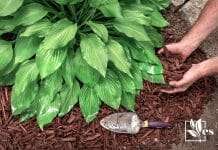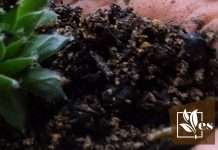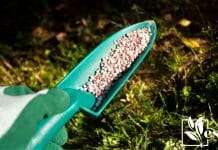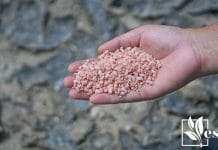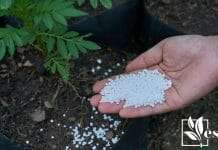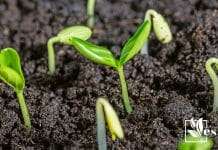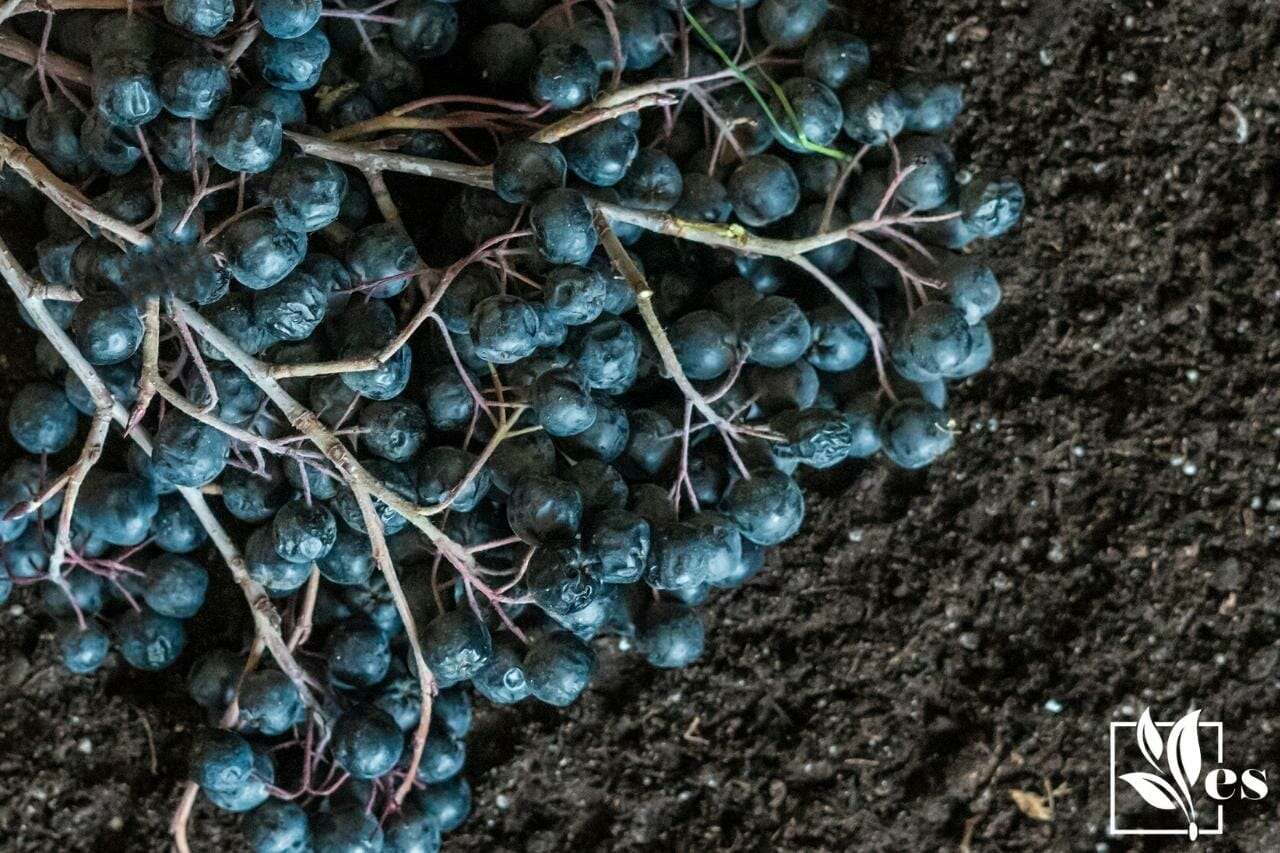 Make soil acidic for blueberries if you want to grow a healthy and high-yield product plant. Decreasing the pH of the soil either before or after your shrub has been planted in it is very easy.
Make soil acidic for blueberries if you want to grow a healthy and high-yield product plant. Decreasing the pH of the soil either before or after your shrub has been planted in it is very easy.
Read our guide below to learn several ways you can acidify your soil all by yourself in a short span of time.
JUMP TO TOPIC
How To Make Soil Acidic for Blueberries Before Planting?
Using sulfur, coffee grounds or peat moss are some effective ways to make soil acidic for blueberries. Use these products on the soil before planting blueberries to ensure a thriving and bountiful yield. Also, add some plants that love acidic soil next to your blueberry.
Want to find out other ways to maintain the ideal blueberry pH level in the soil all by yourself?
We have you covered.
– Elemental Sulfur
Elemental sulfur is one of the quickest methods you can use to make soil more acidic for blueberries. Find out how it works in this section.
– How To Use Sulfur
Here are some important points to remember if you’re planning to use this method:
- In order to drop the pH of the soil by just one point, you need to add around 1 pound of sulfur 50 feet deep in the ground. This phenomenon also depends upon the type of soil you have. More sulfur will be needed for clay and tight soil as compared to loose, sandy soil.
- Always buy granular sulfur from a reputed manufacturer.
- In order to dig deep enough for the sulfur granules to mix properly with the soil, you will need a tiller to move the topsoil about.
- Pour sulfur granules on freshly tilled soil and mix them.
- In a short period of time, your desired pH will be achieved.
- Mix sulfur with soil for at least three months before planting blueberries in it. This will give your shrubs ample time to grow in an ideal environment. The best time is to mix the sulfur in the fall and test the soil in the spring right before planting.
– Sulfur: How It Works
When elemental sulfur is mixed with the soil, a naturally occurring bacteria, thiobacillus, oxidizes it. As a result of this oxidation, sulfuric acid is produced, which lowers the pH of the soil.
– Coffee Grounds
Ground coffee beans are acidic and they have the ability to increase the pH of your soil as well. However, this holds true only for fresh coffee grounds that are unwashed. Washed coffee grounds are natural with a pH of around 6.2 and have no effect on the acidity of the soil whatsoever.
In order to acidify soil for blueberries using ground coffee, take unwashed grounds and mix it with the top layer of the soil. You can also mix these grounds with compost first and then add them to the soil. In both cases, you will see a significant decrease in the pH of the soil. Coffee grounds also repel gnats from your plants.
– Peat Moss
Peat moss is often touted as a reliable ingredient to acidify soil for blueberries, but not all types of peat moss are acidic. Canadian Sphagnum peat moss is the one we always use as it has a pH between 3.0 and 4.5.
Add Canadian sphagnum moss to the top layer of your soil. Choose only two to three inches thick moss and use a rake or a tiller to mix the soil and moss together. The pH of your soil will begin to fall within a day.
– Soil Acidifier
Soil acidifier is an all-natural, commercially produced mineral product that you can buy to acidify soil for blueberries before planting.
While using a soil acidifier, we recommend you carefully follow the instructions given on the label. Most products just need to be sprinkled around the soil, but some of them need to be mixed with water before being applied to the soil.
Here is a guide on how to apply granulated soil acidifiers:
- Take a measuring cup and fill it with the appropriate amount of acidifier.
- For smaller shrubs, one cup should be enough. For larger ones, use two and a half cups of acidifier.
- Pour it in a circle inside the drip line of the shrub. A drip line is an imaginary demarcation of how far the water might drop when you give it to the plant. Most feeder roots are located near the drip lines of the plants.
Lower Soil pH for Blueberries After Planting
Using acidic fertilizers or diluted vinegar will help lower the pH levels of the soil after the blueberries have already been planted.
It will not be possible to till the soil and mix it deeply with acidifying agents once your blueberry plant has established its roots. Read below to find out what you can do in such cases.
– Peat Moss
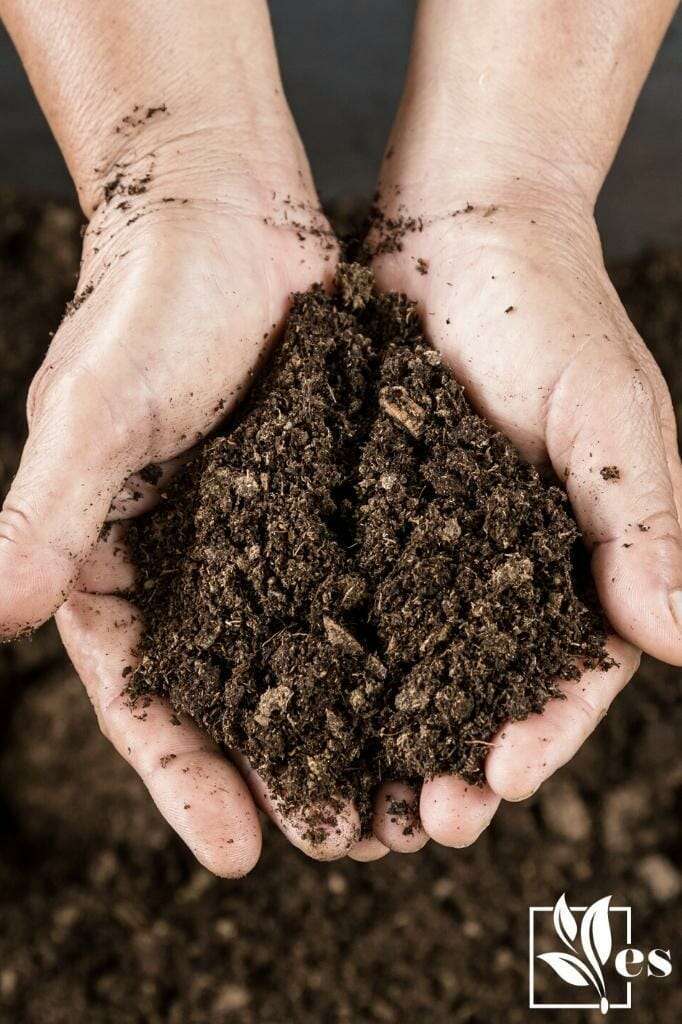 Yes, even for plants with established roots, peat moss can decrease the soil pH significantly. Make a habit of incorporating peat moss into the soil around the base of your plant at least once every year.
Yes, even for plants with established roots, peat moss can decrease the soil pH significantly. Make a habit of incorporating peat moss into the soil around the base of your plant at least once every year.
Another advantage of using peat moss is that it also helps in the drainage and air circulation of the soil and is extremely affordable.
You can also substitute Canadian sphagnum moss if peat moss is unavailable.
– Acidic Fertilizers
Fertilizers that contain the ammonium form of nitrogen such as ammonium nitrate, ammonium phosphate and urea have the ability to lower the pH of the soil over time.
Soil bacteria converts the ammonium in these fertilizers into nitrate. One by-product of this chemical reaction is the hydrogen ion, which increases the acidity in the soil.
-
How To Use Them
Acidic fertilizer for blueberries works very slowly as compared to elemental nitrogen. A pH drop of more than 0.4 will take approximately two years to develop. Moreover, since fertilizers are sprayed on the soil around the plant and cannot be mixed in very deeply, they acidify only the top few inches of the soil.
In most cases, however, even acidifying the top two to three inches of the soil has been shown to alleviate symptoms of iron deficiency in blueberries. Buy acidic fertilizers from a reputable manufacturer and fertilize according to the instructions given on the package.
– Diluted Vinegar
Using vinegar to acidify soil is a short-term but quite effective method to decrease the soil pH around blueberry plants.
Here is a simple process you can follow:
- Mix two tablespoons of vinegar in a gallon of water to create an acidic solution.
- Water your berry plant with this solution once a week.
- Take care to direct the water towards the soil and not on the plant itself.
- This method will raise the acidity of the soil temporarily. You will need to repeat the whole process every week. It is an easy and cheap fix and one of our favorite methods to grow blueberries.
Why Should It Be Acidic?
Soil for blueberry plants should be acidic because the blueberry plant only has a primary root system for the uptake of water and nutrients. It lacks the secondary root system made up of fine hair that is used by other plants for the uptake of microscopic amounts of nutrients. An acidic soil helps blueberries by promoting the levels of acid-loving bacteria in them.
These bacteria break down the minerals in the soil and release phosphorus, magnesium, iron, etc. This makes it very convenient for the primary roots of blueberries to obtain these nutrients and use them for growth and development.
The ideal soil pH for growing blueberries should be around 4.5 to 5. Your plant needs these lower acidity levels to grow properly.
– Blueberries Planted in Non-acidic Soil
When blueberries are planted in soil with higher than the required pH, they appear fine at first. Eventually, however, the lack of nutrients will begin to manifest itself as clear-cut signs and symptoms.
-
Iron Deficiency
This is the first and foremost nutrient that becomes difficult to access in an alkaline soil. Your plant will start producing small-sized leaves, which might turn yellow and have brown edges. Growth is halted and the plant eventually starts to die.
Other Helpful Information
Have some burning questions regarding adjusting the blueberry pH levels of soil?
Continue reading to find out the answers to commonly-asked questions regarding this issue.
– How To Know Whether the PH of Your Soil Is Suitable for Blueberries
You should always perform a soil test to determine the pH level of the soil in which your blueberries are growing.
-
Home Litmus Test
A simple home litmus test can be performed in minutes. It will tell you whether your soil is acidic or alkaline.
Here is how to perform a litmus test:
- Take a container and use it to mix a small amount of soil with water.
- Dip a litmus paper in this mixture and hold it there for one to two seconds.
- If the litmus paper comes out red, then this means that your soil is acidic. If it comes out blue, then your soil is alkaline.
-
Laboratory Analysis

Send a small sample of your soil to the nearest laboratory to get it checked. The lab will send you back a detailed report regarding not only the pH levels of the soil but also its nutrients and microbial contents.
– How to Acidify the Roots of Established Plants by Elemental Sulfur?
You can acidify the roots of established blueberry plants by digging 1-foot-deep holes for the sulfur near the roots around the drip line. Try digging about four holes per tree and fill them with elemental sulfur.




